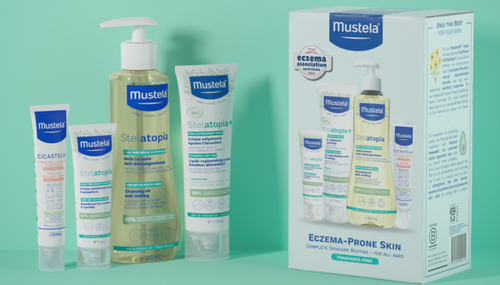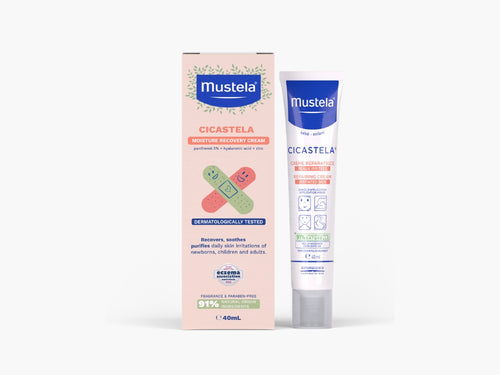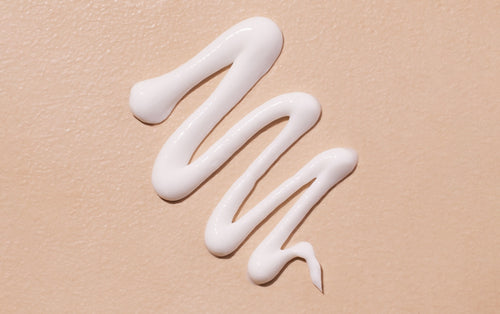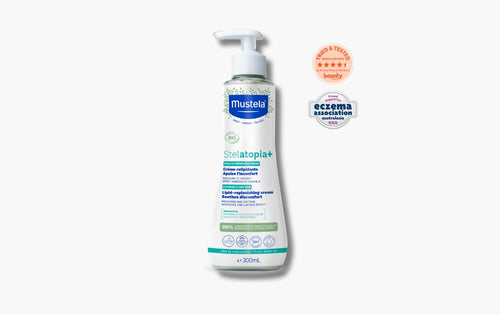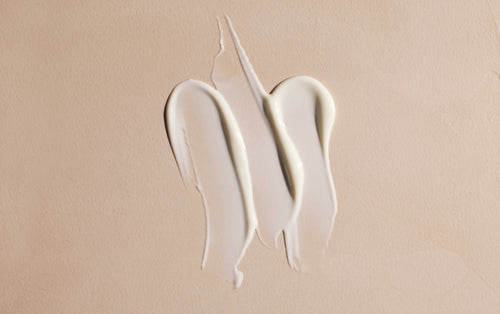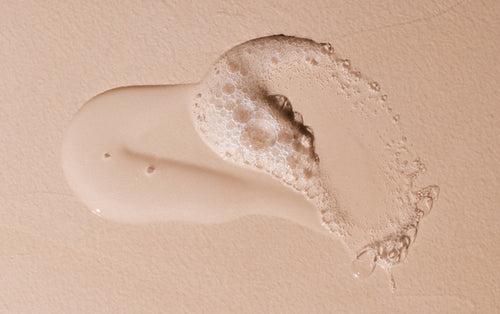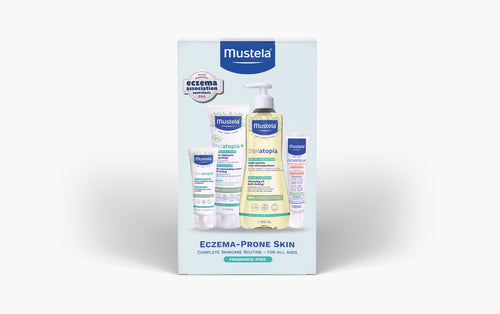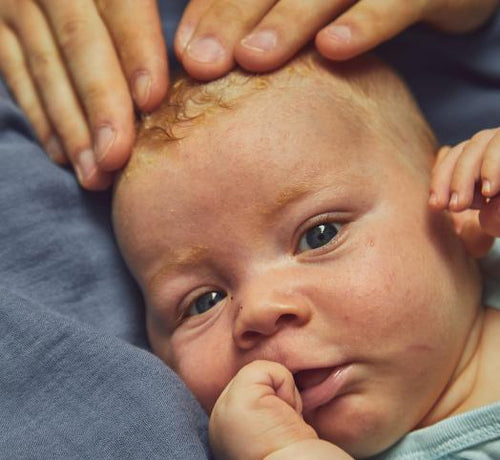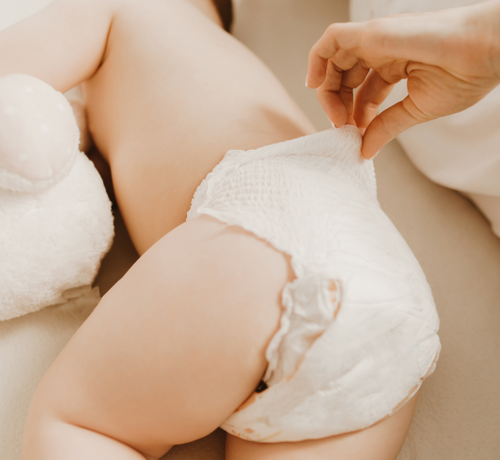What is Atopic Dermatitis in Babies?
Atopic dermatitis represents one of the most widespread skin conditions affecting infants, typically appearing during the first six months of life. It affects 1 in 3 children in Australia. Red patches, extreme dryness, and intense itching are common signs that can cause discomfort for your little one. Understanding these early symptoms helps you identify if your baby has eczema-prone skin and take appropriate steps for their care.
Research shows that up to 25% of babies develop this condition, which manifests as red, dry patches that can become intensely itchy. The connection between genetic factors and environmental triggers plays a crucial role, with babies whose parents have allergic conditions facing a higher risk, with babies having a 40-50% chance of developing eczema if one parent has atopic dermatitis, increasing to 50-80% when both parents are affected.
Understanding your baby's eczema-prone skin needs special attention, as each case varies in severity. While some infants experience mild, occasional flare-ups, others might need more comprehensive care. Mustela Stelatopia range is specifically designed to provide gentle yet effective relief for eczema-prone skin, helping soothe and reduce redness.
Common Signs of Baby Eczema on Face and Body
Babies often develop small, reddish bumps that can cluster together, particularly behind the ears and along the hairline. These patches may feel warm to touch and become flaky over time.
When eczema affects the body, it frequently appears in skin folds like the inner elbows and behind the knees. Persistent scratching might lead to thickened skin areas, taking on a leathery appearance. Look for symmetrical patterns – if a rash appears on one cheek, it often mirrors on the other side.
During teething, increased drooling can worsen facial symptoms, creating raw patches around the mouth and chin. Keep an eye on your baby's neck folds, where moisture can trap and intensify irritation.
How Atopic Dermatitis Affects Infant Skin?
When atopic dermatitis develops, it fundamentally alters an infant's skin barrier function. The protective outer layer becomes compromised, leading to increased moisture loss and greater vulnerability to environmental irritants. This disruption triggers an inflammatory response, causing the skin to become more reactive to everyday substances.
The condition creates a cycle where weakened skin defenses allow allergens to penetrate more easily, prompting the immune system to overreact. Babies experience heightened sensitivity to temperature changes, fabrics, and even water. Their skin loses its natural ability to maintain proper hydration levels.
Research shows that these changes can affect sleep patterns and comfort levels, making babies more irritable during daily activities. Understanding these underlying mechanisms helps parents provide appropriate care and select suitable skincare products like Mustela's Stelatopia range.
Identifying Eczema Symptoms in Different Ages
- Newborns to 2 months show initial signs on facial areas with pink to reddish bumps, particularly across the forehead and cheeks.
- Between 2-6 months, patches typically spread to the scalp and can cause crusty yellow areas that require gentle cleansing with Mustela Stelatopia products.
- From 6-12 months, symptoms commonly develop on crawling zones like knees and elbows due to increased physical activity.
- Toddlers aged 1-2 years experience flare-ups in new locations, including ankles and wrists, requiring consistent moisturizing care.
- Preschool children aged 2-5 years may see symptoms decrease, though areas around joints remain susceptible to dryness.
- School-age children often notice changes in symptom patterns, with flare-ups triggered by outdoor activities and temperature variations.
Is Eczema Contagious?
Parents can feel reassured that baby eczema cannot spread from one child to another. Unlike common childhood conditions such as chickenpox, eczema develops due to genetic factors and environmental triggers rather than through physical contact. Your baby can safely play with other children, swim in pools, and participate in normal activities without concern about passing eczema to others.
While the condition itself isn't transmissible, broken skin from scratching may become vulnerable to bacterial infections. Using Mustela's Stelatopia range helps maintain skin health and reduces this risk.
What causes Eczema flare-ups?
Environmental Factors and Skin Irritants
Household cleaning products and synthetic fragrances rank among the primary triggers for baby skin reactions. Even gentle laundry detergents can disturb delicate skin barriers, making natural alternatives worth considering.
Environmental allergens like dust mites and pet dander frequently spark flare-ups, particularly in carpeted nurseries or rooms with plush toys. Parents should note that air quality plays a significant role – both indoor pollution from cooking fumes and outdoor pollutants can affect sensitive skin.
Common bath products might contain hidden irritants. Mustela's Stelatopia range offers gentle formulations that respect your baby's delicate skin barrier while cleansing. Consider using a dehumidifier in your baby's room, as maintaining optimal humidity levels between 30-50% helps protect the skin's natural moisture balance.
Food-Related Triggers in Infants
Understanding which foods might affect your baby's skin helps prevent unnecessary discomfort. Dairy products and eggs rank among the most prevalent dietary triggers for infants with eczema-prone skin. Parents should pay particular attention to reactions within 48 hours of introducing new foods.
When introducing solid foods, start with single ingredients to track any potential reactions effectively. A practical approach involves keeping a detailed food diary to identify patterns between meals and skin reactions. Remember that eliminating foods without professional guidance can lead to nutritional deficiencies. Work with your healthcare team to develop a balanced diet that supports your baby's growth while managing their eczema-prone skin.
Weather and Temperature Effects
Dramatic shifts in climate can significantly impact your baby's eczema-prone skin. Extreme temperatures, whether hot or cold, pose unique challenges for delicate skin barriers. During summer months, excess sweating may lead to uncomfortable rashes, while winter's dry air strips essential moisture from sensitive areas.
Maintaining your home's temperature at 18°C helps minimize these effects. A room humidity level above 30% proves beneficial for your baby's skin comfort, particularly during sleep hours. Running a humidifier in your baby's room creates a protective environment against harsh weather conditions.
Cool, gentle baths followed by Mustela Stelatopia+ Lipid-replenishing Cream application shield your little one's skin from temperature-related discomfort. This approach preserves skin moisture while creating a protective barrier against both heat and cold exposure.
How to treat baby eczema?
Gentle Cleansing and Bath Oil Benefits
The right bathing routine plays a vital role in managing your baby's eczema-prone skin. Mustela Stelatopia Cleansing Oil creates a protective barrier while bathing, defending delicate skin against the drying effects of water.
Pour 2-3 drops directly into lukewarm bath water or apply to wet skin using gentle circular motions. This fragrance-free formula, enriched with sunflower oil distillate, helps restore the skin's natural protective layer and soothes irritation.
A quick 5-10 minute bath keeps skin from drying out while allowing the cleansing oil to work effectively. Follow with a soft pat-dry using a clean cotton towel, leaving skin slightly damp for optimal moisturizer absorption.
Best Creams for Atopic Dermatitis
Stelatopia+ Lipid-replenishing Cream is a 99% natural emollient cream specifically formulated to care for eczema-prone skin. Enriched with prebiotic Bioecolia and patented Sunflower Oil Distillate, it gently soothes, deeply hydrates and helps restore the skin’s barrier – providing effective relief for the whole family.
It works most effectively when applied to slightly damp skin within three minutes after bathing. This technique locks in essential moisture while creating a protective barrier against irritants.
For facial areas, Stelatopia Emollient Face Cream provides immediate and long-lasting hydration to soothe skin discomfort, tightness and itching. Made from 97% natural ingredients, including patented Sunflower Oil Distillate, this fragrance-free cream helps rebuild the skin's protective barrier through Active Relipidation®. It is formulated to be safe to use on the eyelids and around the eyes, providing instant relief without leaving a greasy residue.
Post flare-ups, Cicastela Moisture Recovery Cream helps reduce and repair skin irritation, due to intense itching. This multi-purpose cream is specially formulated with hyaluronic acid and panthenol to restore weakened skin and provide immediate soothing relief. Cicastela hydrates skin and makes it more supple and comfortable, while its copper-zinc complex helps purify the epidermis. The cream's light texture leaves a non-greasy, protective film that helps strengthen the skin's natural hydration barrier over time.
How to cure baby eczema naturally for mild cases?
- Lukewarm oatmeal baths soothe irritated skin and reduce inflammation in babies with mild eczema flares.
- Cotton mittens protect babies from scratching while sleeping, preventing skin damage during nighttime flares.
- Chamomile compresses calm red patches when applied directly to affected areas for 5 minutes.
- Air-drying clothes outdoors reduces contact with harsh dryer chemicals that may trigger skin reactions.
- Maintaining room temperature at 20-22°C prevents sweat-induced irritation during sleep periods.
Medical Treatments for Severe Symptoms
When natural remedies and regular moisturising aren't enough, your healthcare provider may suggest stronger treatments. Prescription topical corticosteroids are the main treatment for severe flare-ups, used sparingly on affected areas for limited periods.
For persistent cases, your might be recommend wet wrap therapy, where medication is applied and covered with damp bandages to improve absorption. Doctor Doctor Doctor
Always monitor your baby's skin during treatment and inform your healthcare professional of any changes.


